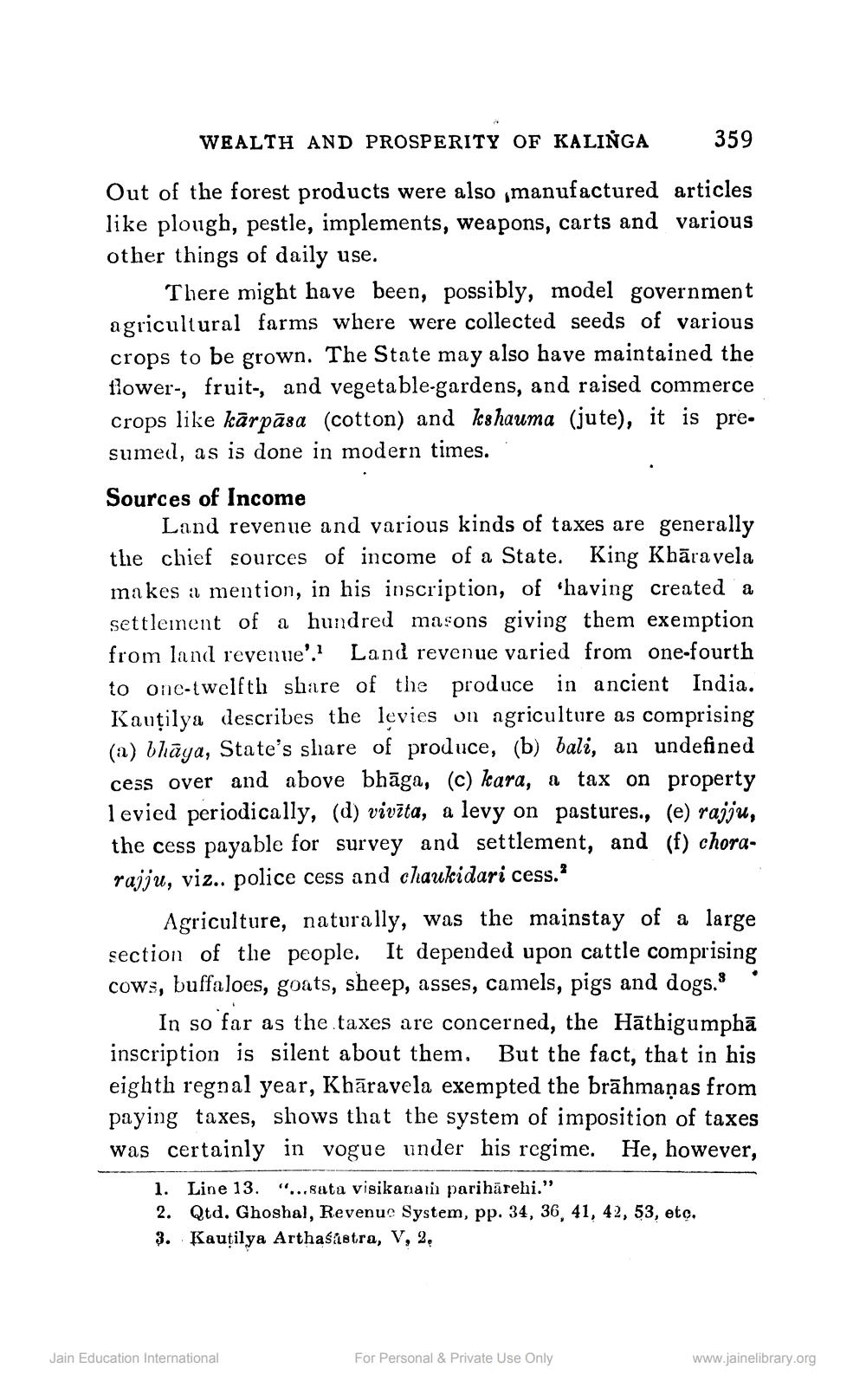________________
WEALTH AND PROSPERITY OF KALINGA 359 Out of the forest products were also ,manufactured articles like plough, pestle, implements, weapons, carts and various other things of daily use.
There might have been, possibly, model government agricultural farms where were collected seeds of various crops to be grown. The State may also have maintained the flower-, fruits, and vegetable.gardens, and raised commerce Crops like kārpāsa (cotton) and kshauma (jute), it is pre. sumed, as is done in modern times. Sources of Income
Land revenue and various kinds of taxes are generally the chief sources of income of a State. King Kbāravela makes a mention, in his inscription, of having created a settlement of a hundred masons giving them exemption from land revenue'.' Land revenue varied from one-fourth to one-twelfth share of the produce in ancient India. Kautilya describes the levies on agriculture as comprising (a) bhāya, State's share of produce, (b) bali, an undefined cess over and above bhāga, (c) kara, a tax on property levied periodically, (d) vivīta, a levy on pastures., (e) rajju, the cess payable for survey and settlement, and (f) chorarajju, viz.. police cess and chaukidari cess.?
Agriculture, naturally, was the mainstay of a large section of the people. It depended upon cattle comprising cows, buffaloes, goats, sheep, asses, camels, pigs and dogs.
In so far as the taxes are concerned, the Hāthigumphā inscription is silent about them. But the fact, that in his eighth regnal year, Khāravela exempted the brāhmaṇas from paying taxes, shows that the system of imposition of taxes was certainly in vogue under his regime. He, however,
1. Line 13. “...sata visikanan parihārehi." 2. Qtd. Ghoshal, Revenue System, pp. 34, 36, 41, 42, 53, eto, 3. Kautilya Arthaśástra, V, 2.
Jain Education International
For Personal & Private Use Only
www.jainelibrary.org




